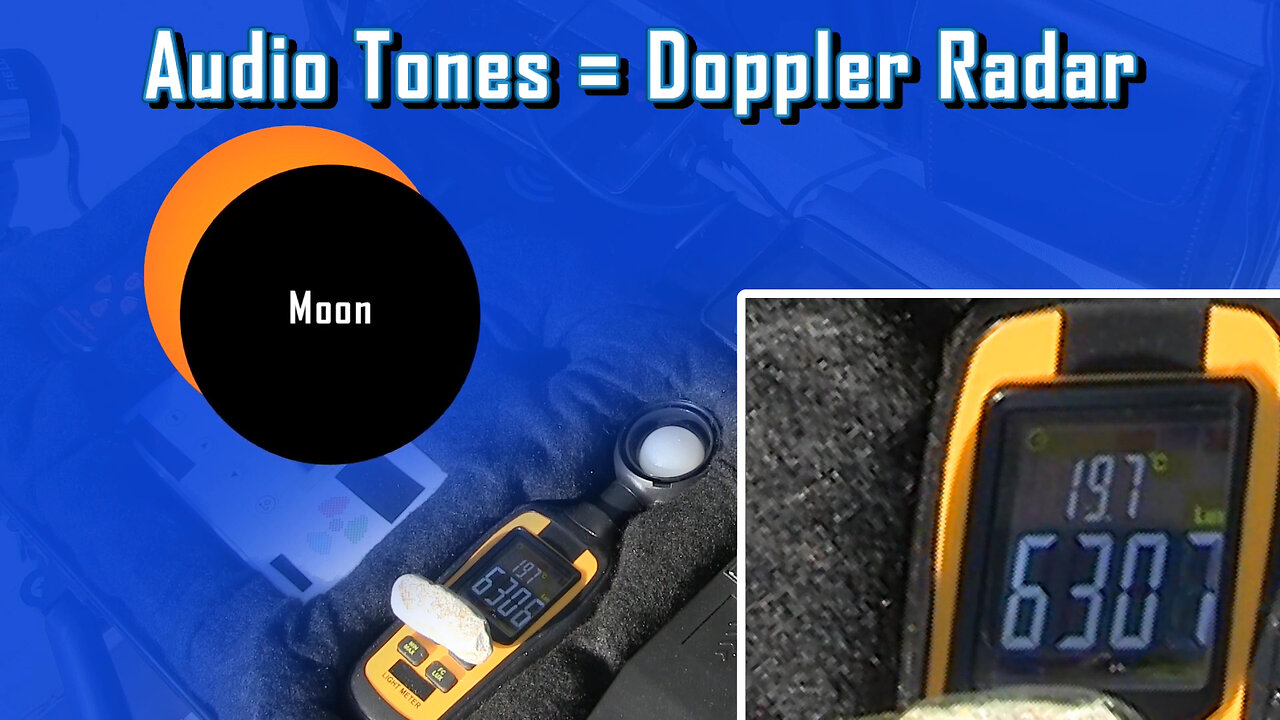Premium Only Content

Solar Eclipse: Measuring Lux and Listening on Doppler Radar (Nevada 2023)
Aura 14 Day Free Trial: https://aura.com/ufoseekers | Protect your family from identity theft, fraud, and online threats with Aura. Use the link above for a 14 day free trial and 63% Off! (Offer subject to change.)
Our team measured the Lux (Illumination) of the 2023 Annular Eclipse in Southern Nevada (Pahrump) on October 14 at 9:20-9:21am. We also listened via a Doppler Radar pointed directly at the sun during the annular eclipse.
Our minimum lux meter reading was 6,302 Lux. Our normal Lux for that time of day is approx. 8,000 Lux (with partial cloud cover approximated). Our meter measured a 21% + - decline in the sun's illumination during the annular eclipse. We also captured anomalies on the Doppler Radar although they may be bugs or birds.
An Annular Eclipse varies from a Total Eclipse in one major way. While a Total Solar Eclipse obscures the entirety of the sun at its peak totality, an Annular Solar Eclipse means that a small amount of annularity, popularly known as a "Ring of Fire," remains. These differences occur due to the moon's elliptical orbit around the Earth, so the distance is not constant and allows the moon to appear smaller or larger in the sky. Annular eclipses take place during a further part of the moon's orbit.
The lux (symbol: lx) is the unit of illuminance, or luminous flux per unit area, in the International System of Units (SI). It is equal to one lumen per square metre. In photometry, this is used as a measure of the intensity, as perceived by the human eye, of light that hits or passes through a surface. It is analogous to the radiometric unit watt per square metre, but with the power at each wavelength weighted according to the luminosity function, a model of human visual brightness perception, standardized by the CIE and ISO.
-
 4:36
4:36
UFO Seekers ®
8 months agoMystery Drone Chased by Jet Fighter + Radar Aircraft Yesterday in Nevada!
7553 -
 LIVE
LIVE
GritsGG
9 hours agoWin Streaking! Most Wins 3485+ 🧠
61 watching -
 1:14:52
1:14:52
TheCrucible
1 hour agoThe Extravaganza! EP: 29 (8/28/25)
32.1K5 -
 DVR
DVR
Kim Iversen
2 hours agoTrans. Russian. Anti-Israel. Anti-Trump. Are You Buying This Story?
5.25K23 -
 1:51:08
1:51:08
Redacted News
2 hours agoEMERGENCY! BILL GATES CULT MEMBERS FOUND PLANTED INSIDE MULTIPLE FEDERAL AGENCIES, RFK FURIOUS
91K61 -
 31:02
31:02
Kimberly Guilfoyle
3 hours agoFull Breaking News Coverage: Live with John Nantz & Steve Moore | Ep250
11.4K5 -
 1:15:19
1:15:19
vivafrei
4 hours agoShameless Politicization of Tragedy! Susan Monarez is OUT! Pritzker is an IDIOT! & MORE!
98.6K43 -
 9:52
9:52
Tundra Tactical
1 hour agoCracker Meme Review On Tundra Meme Review!!
28 -
 LIVE
LIVE
Wayne Allyn Root | WAR Zone
5 hours agoWAR Zone LIVE | 28 AUGUST 2025
88 watching -
 LIVE
LIVE
LFA TV
11 hours agoLFA TV ALL DAY STREAM - THURSDAY 8/28/25
1,128 watching